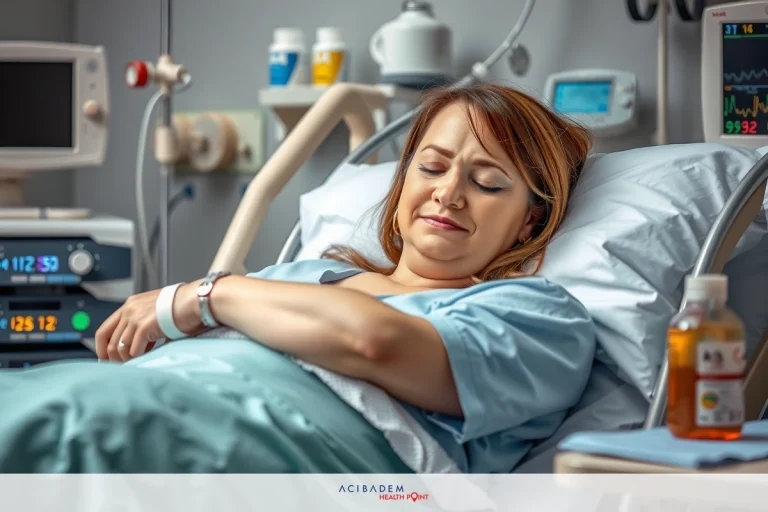Do You Have a Drain After Gastric Sleeve Surgery?
Do You Have a Drain After Gastric Sleeve Surgery? Gastric sleeve surgery is a widely recognized and commonly implemented procedure for weight loss. This surgery, like any major operation, requires careful postoperative care to ensure optimal recovery and the best possible outcomes for patients. One aspect of this care that patients often have questions about is the use of drains after surgery.
Drains play a critical role in postoperative care following gastric sleeve surgery. They are designed to remove excess fluids from the surgical site, helping to reduce swelling and prevent infection. Understanding how these drains function and what to expect during the recovery process can provide patients with a sense of ease and preparedness. In this article, we will explore the role of drains in gastric sleeve surgery and discuss patient experiences with them.
Postoperative Care for Gastric Sleeve Surgery
Gastric sleeve surgery, also known as sleeve gastrectomy, is a procedure that requires comprehensive postoperative care to ensure a smooth recovery. After the surgery, the healthcare team will monitor vital signs and manage any pain or discomfort. Maintaining hydration and ensuring adequate nutrition are critical in the initial stages of recovery. The patient will be encouraged to walk around as soon as it’s comfortable to assist in circulation and speed up recovery.
One essential part of postoperative care is the management of surgical drains. These devices are inserted during surgery at the incision site to remove excess fluid and blood that may accumulate post-surgery. They play a crucial role in preventing complications such as infections and abscesses. Patients may experience mild discomfort due to the drain, but it’s a necessary part of the healing process.
The removal of these drains is an important aspect of postoperative care. The timing of drain removal varies from patient to patient, depending on factors such as the amount of drainage, the individual’s overall health, and the surgeon’s preference. Generally, drains are removed when the output decreases, indicating that the body is no longer producing excess fluids at the surgery site.
After drain removal, patients continue their recovery journey with guidance on diet and exercise from their healthcare provider. A well-balanced diet rich in protein can support healing and weight loss. Regular physical activity, adjusted according to individual ability, helps maintain muscle tone and promotes further weight loss.
Postoperative care for gastric sleeve surgery is thorough, with close monitoring to catch any potential issues early. The use of drains and their eventual removal is a standard part of this care process. With proper attention to all aspects of postoperative care, including diet, exercise, and drain management, patients can look forward to a successful recovery following gastric sleeve surgery.
The Role of Drains in Gastric Sleeve Surgery
Drains play a crucial role in the postoperative care and recovery process following gastric sleeve surgery. They are medical devices inserted into the surgical area to remove excess fluids like blood and bodily secretions that may accumulate after the procedure. By eliminating these fluids, drains help prevent complications such as swelling, infection, and hematoma. They’re typically inserted at the time of surgery and remain in place for several days during the initial recovery period.
The type of drain used and its placement can vary based on factors like the surgeon’s preference or the specifics

of the operation. However, they all serve the same primary purpose: to keep the surgical area clean and promote healing. The drain usually consists of a flexible tube leading from the surgical site to a collection bulb outside the body. The patient or caregiver will be taught how to monitor the amount of fluid collected and when to empty it. This monitoring is crucial because it also helps doctors determine when it’s appropriate to remove the drain.
Removal of drains is an essential step in the recovery process. It’s typically done once the fluid output decreases, indicating that there’s no longer a need for drainage. The removal process is relatively straightforward and is usually performed by a healthcare professional during a follow-up appointment. After removal, patients notice an immediate improvement in their comfort levels, but it’s important to continue monitoring the surgical site for any signs of infection or complications. While drains are a temporary part of postoperative care, they play an integral role in ensuring successful recovery after gastric sleeve surgery.

Patient Experience with Drains After Gastric Sleeve Surgery
Patients who have undergone gastric sleeve surgery and had drains placed often express a range of experiences. While the presence of a drain may initially seem surprising or even daunting, most patients quickly adapt to their presence. It’s common for patients to report some discomfort around the drain site, but this is usually manageable with over-the-counter pain medications.
The process of emptying and caring for the drains can be a new experience for many patients. However, healthcare providers will provide detailed instructions and guidance on how to manage this task at home. Patients are often surprised by how straightforward it is to empty and monitor the drainage bulb. Many also report a sense of reassurance in being able to actively participate in their recovery process.
The removal of the drains is another milestone in the recovery journey. While some patients express slight apprehension about this process, most find it to be quick and relatively painless, often describing it as feeling ‘strange’ rather than painful. Following drain removal, patients usually report an immediate increase in comfort and mobility.
Overall, while having a drain after gastric sleeve surgery can seem challenging at first, most patients find that they adapt quickly with appropriate guidance from their healthcare team. It’s important to remember that the experience can vary from person to person, but understanding what to expect can help prepare you for the postoperative period and promote a smooth recovery.
Frequently Asked Questions
How long will I have a drain after gastric sleeve surgery?
The duration of having a drain after gastric sleeve surgery can vary from patient to patient. Typically, drains are removed once the drainage output decreases, indicating that the body is no longer producing excess fluids at the surgical site. This can range from a few days to a week or more.
Will having a drain be painful?
Discomfort around the drain site is common after gastric sleeve surgery. However, most patients find it manageable with over-the-counter pain medications. It's important to follow your healthcare provider's instructions for pain management and report any severe or worsening pain.
Can I shower with a drain in place?
It's generally recommended to avoid submerging the drain or incision site in water until the drain has been removed. However, your healthcare provider will provide specific instructions regarding showering and keeping the drain site clean. It's crucial to follow their guidance to minimize the risk of infection.
What should I do if there is excessive drainage or bleeding from the drain site?
If you notice an increase in drainage or bleeding from the drain site, it's important to contact your healthcare provider immediately. They will evaluate the situation and provide appropriate guidance on how to address any potential issues.
Can I resume normal activities with a drain in place?
While it's essential to take it easy and avoid strenuous activities during the initial recovery period, you can generally resume light activities as tolerated with a drain in place. However, it's crucial to consult with your healthcare provider for specific guidelines on activity restrictions and gradually increasing your activity level. Please note that these are general answers and individual experiences may vary. It's always best to consult with your healthcare provider for personalized advice and guidance based on your specific situation.











